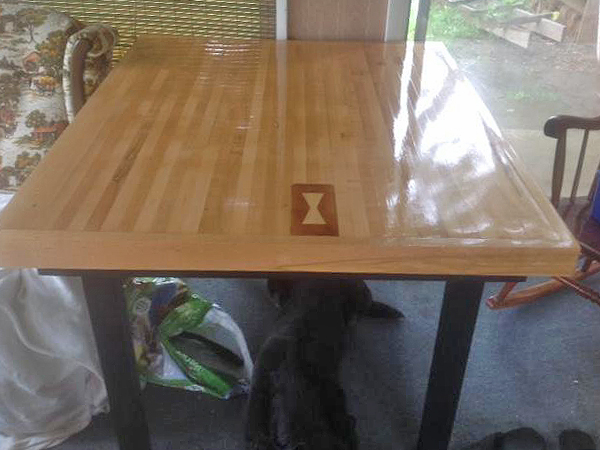
Last week Rob praised the virtues of butternut lumber. Several readers echo his affection for this hard-to-find species. – Editor
I got my hands on a small pile of butternut a few years ago, and it was a pleasure to work with. Made some display cabinets out of it and it ended up giving the project a lighter feel than if I had used walnut or cherry. – Frank McEnulty
I made two kitchens out of butternut in 1979 and then in 1985. When finished clear, butternut is a very warm wood with a slight pinkish cast. I mostly make furniture now but I’ve done a lot of remodeling over the years. Butternut is still hard to get, and most mills charge a premium for it. – Jerry Leupen
I get my butternut lumber at Kettle Moraine Hardwoods in Hartford, Wisconsin. – Tim Lange
Greetings from New Brunswick, Canada! It was a pleasant surprise to read your editorial about butternut lumber. Where I grew up on the Saint John River here in New Brunswick, there were thousands of butternut trees all up the Saint John river valley and its tributaries. However, like butternut most everywhere else, a number of years ago it was attacked by some disease or insect and there are very few left. I once drove through upper New York State and saw clear cuts with piles of logs, and when I asked about them was told that they were butternut that had been cut for burning to try to stop the disease. I don’t know the accuracy of that information, but that is what I was told and it made me almost cry. I lived next door to a family friend who was a woodsman and had a small custom sawmill. He bought and sold logs and lumber, and when a butternut log came in, he kept it, processed it and stored it for later personal use and sale. Unfortunately, butternut is now hard to find here, although I still have some left from years ago. Butternut is one of my favorite woods for making things — blanket boxes, quilt racks, four-poster bed, serving trays, chess sets, chess boards… Several years ago I found out that the dust is toxic and should be worked with using good dust filtering. It works and glues up so easily and takes such a nice finish. I usually use natural Danish oil. – Crawford Brewer
Here in northwest Pennsylvania, we call butternut “poor man’s walnut.” It carves well and finishes richly. – Robert Durst
If you like butternut lumber, wait until you get ahold of some butternut burl. Here is a piece I recently finished. – Kevin Née

Pandemic projects continue to reach our inbox, too. – Editor

Here is a chair for my granddaughter who turns one this month. You might recognize it as a Woodworker’s Journal classic project WJC133 Child’s Windsor Chair. This is actually chair number five for me but the first made from all self-harvested ash. All my previous chairs were painted, but I want to use a dye on this one. The ash has a very open grain. The project is challenging with all the angles, but a drill press makes it much easier than what the plans use. I am surprised at how forgiving the chair is. By the way, three of my four other chairs are still doing fine, but my 6-year-old bruiser of a grandson was able to break the arm off the chair — something I couldn’t do when I sat on it. – Barney Heller


Here’s a white walnut bow tie in a black walnut table I recently made. I went with a similar idea on another table: white walnut in black walnut in hard maple made from a bowling lane. – Kevin Courtright







